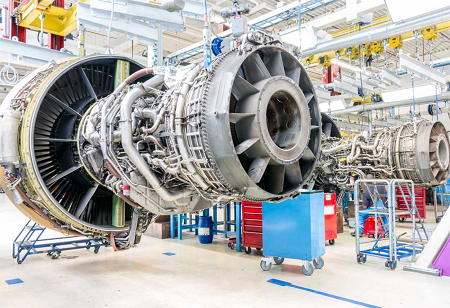Starting with the first man-made kite, the history of aviation dates back to more than 2200 years. Since then, the
aerospace and aviation industry has seen significant changes, especially with the changing market dynamics and evolution in next-gen technologies. The aviation and aerospace manufacturers have been delving into the industry so as to support aviation by building aircraft and manufacturing aircraft parts for their maintenance; right from aircraft and parts used for civil aviation and military aviation.
This is further segmented with regards to its types, certificates, and defense standards that are issued by a government body. Today, the aerospace market consists of sales of aerospace equipment and related services by entities to produce commercial aircraft, undertake aircraft maintenance, repair and overhauling services, and produce support and auxiliary equipment, including radar, air traffic control towers and satellites for civilian purposes.
The recent decline of aerospace market is mainly due to economic slowdown across countries owing to the COVID-19 outbreak and the measures to contain it. The market is then expected to recover and grow at a CAGR of 5% from 2021 and reach $378.5 billion in 2023.
However, there are few hurdles that the players in this space must jump over. For instance, budget airlines’ bankruptcy, order cancellations, increased cyber-attacks, global warming, poor aviation infrastructure, geo-political tensions, global recession, are some of the major problems faced by the manufacturers in this space.
“Manufacturers need to increase machine availability and reduce unscheduled downtime to respond to global competition and manage maintenance and maximize production. While devising the predictive maintenance strategy, the benchmark or the KPI should manage both planned & unplanned downtimes. The unplanned downtime lowers down asset availability while routine periodic or preventative maintenance reduces utilization. But predictive maintenance helps to predict a failure and take corrective actions at the right time. It also reduces maintenance costs because maintenance is done whenever it is necessary,” quotes Rajeev Sharma, Chief Strategy Officer, Mitsubishi Electric India Pvt. Ltd.
Impact of new technologies
Today, with the advancements across various technologies, aerospace and aircraft manufacturers are using machine-learning techniques such as artificial intelligence (AI) to improve safety, productivity and quality of aircrafts. Machine learning algorithms collect structured data from machine-to-machine and machine-to-human interfaces so as to perform analytics with the use of these collected data and drive effective decision making. These technologies optimize manufacturing operations and costs, and have been significantly useful in identifying faults in engines, thus increasing the lifecycle of parts and reducing overall maintenance costs.
Furthermore, gaining a lot of traction recently in both civil and commercial sectors, are emerging trends such as the idea of a zero-fuel aircraft. This innovative concept can be used in agriculture, aerial photography, 3D mapping, wildlife protection, and also provisioning the internet access across remote places.
Another trend which has been gaining traction is Advanced Space Propulsion Technologies. The fact that this technology is expected to reduce fuel consumption and enable long-term space missions in the future is what drives the growth of this technology. In addition, Smart Automation and Blockchain have been making the highly specialized and complicated process of Manufacturing aircraft parts a seamless process. Moreover, Blockchain is said to bring in the needed transparency and also automate transactions among supply chain partners.
